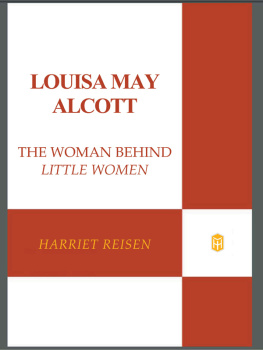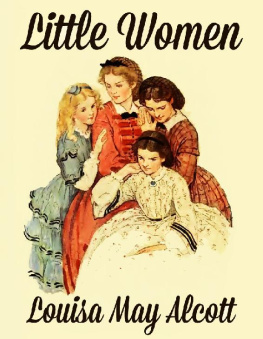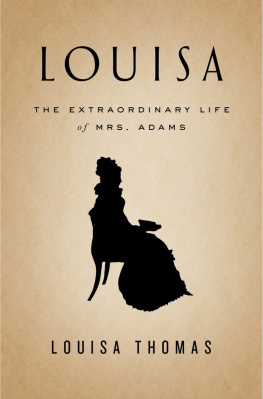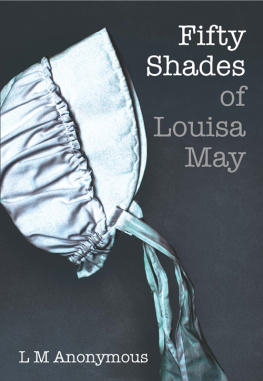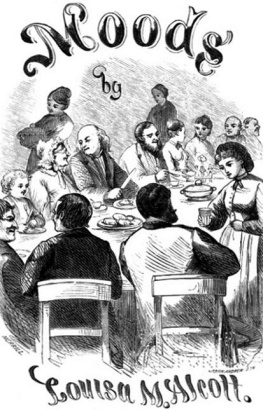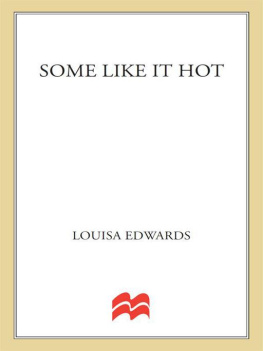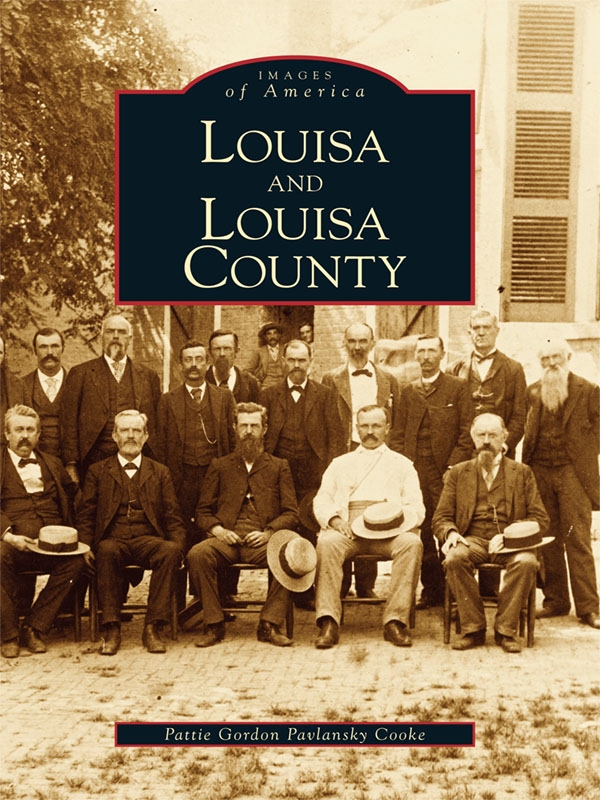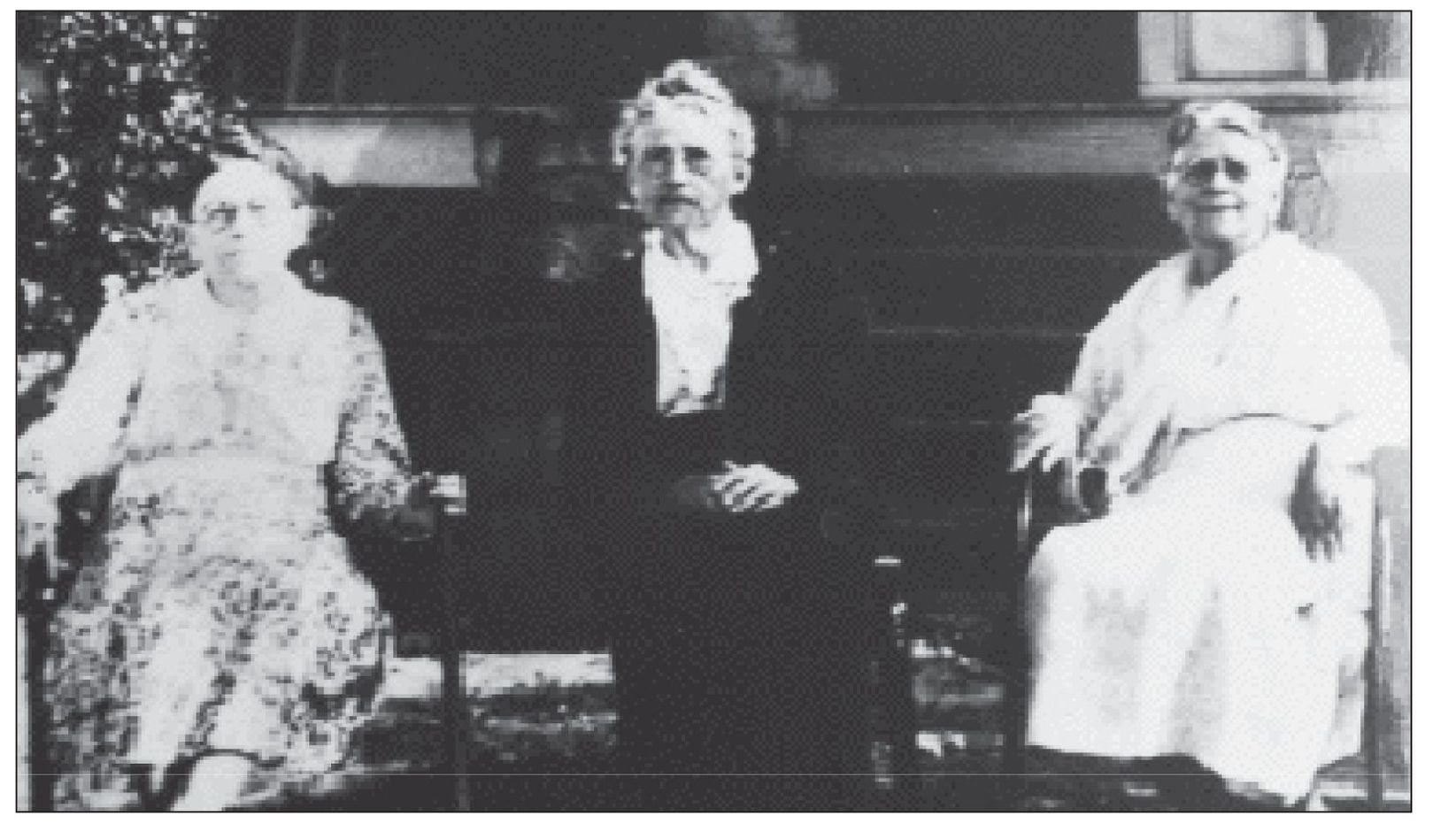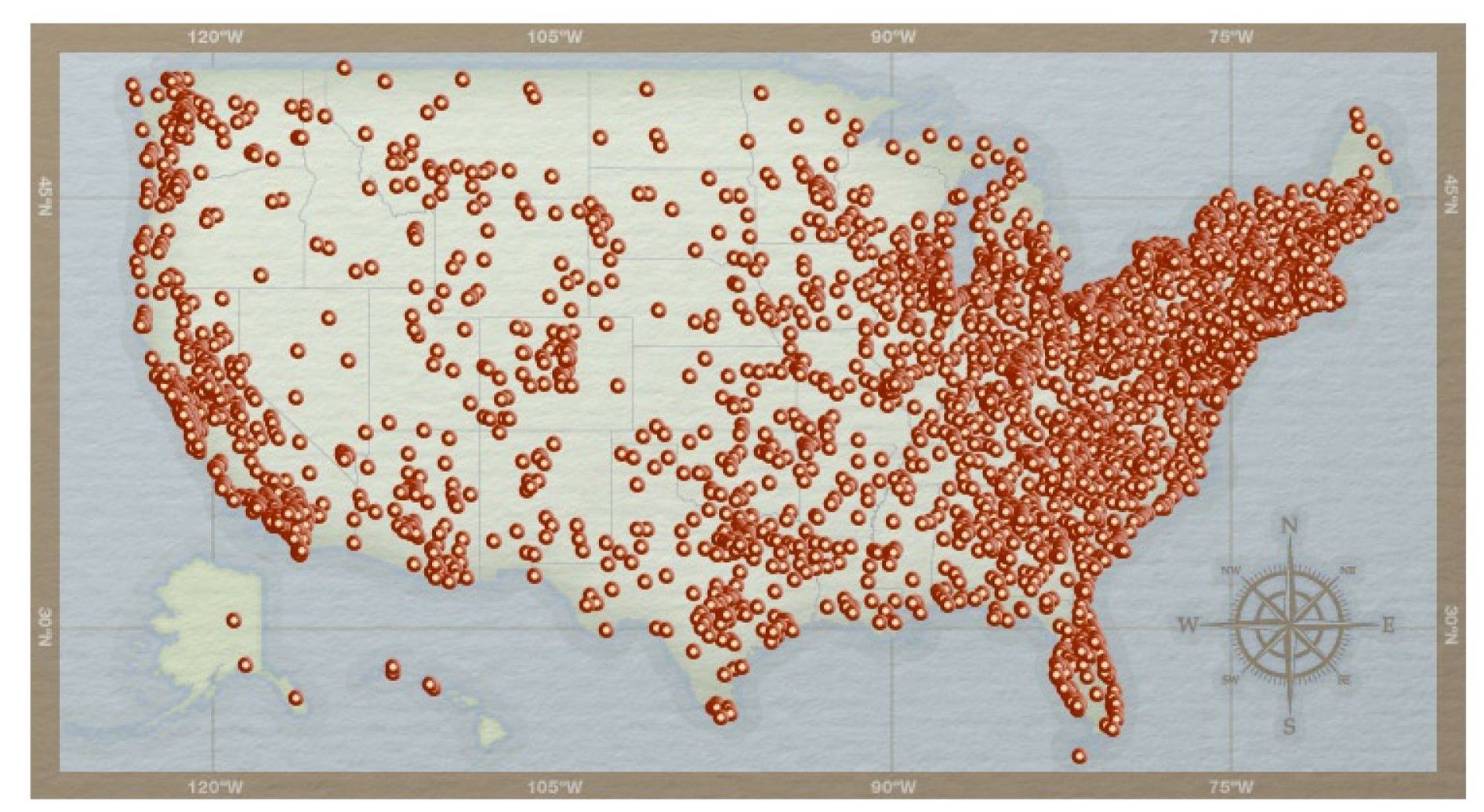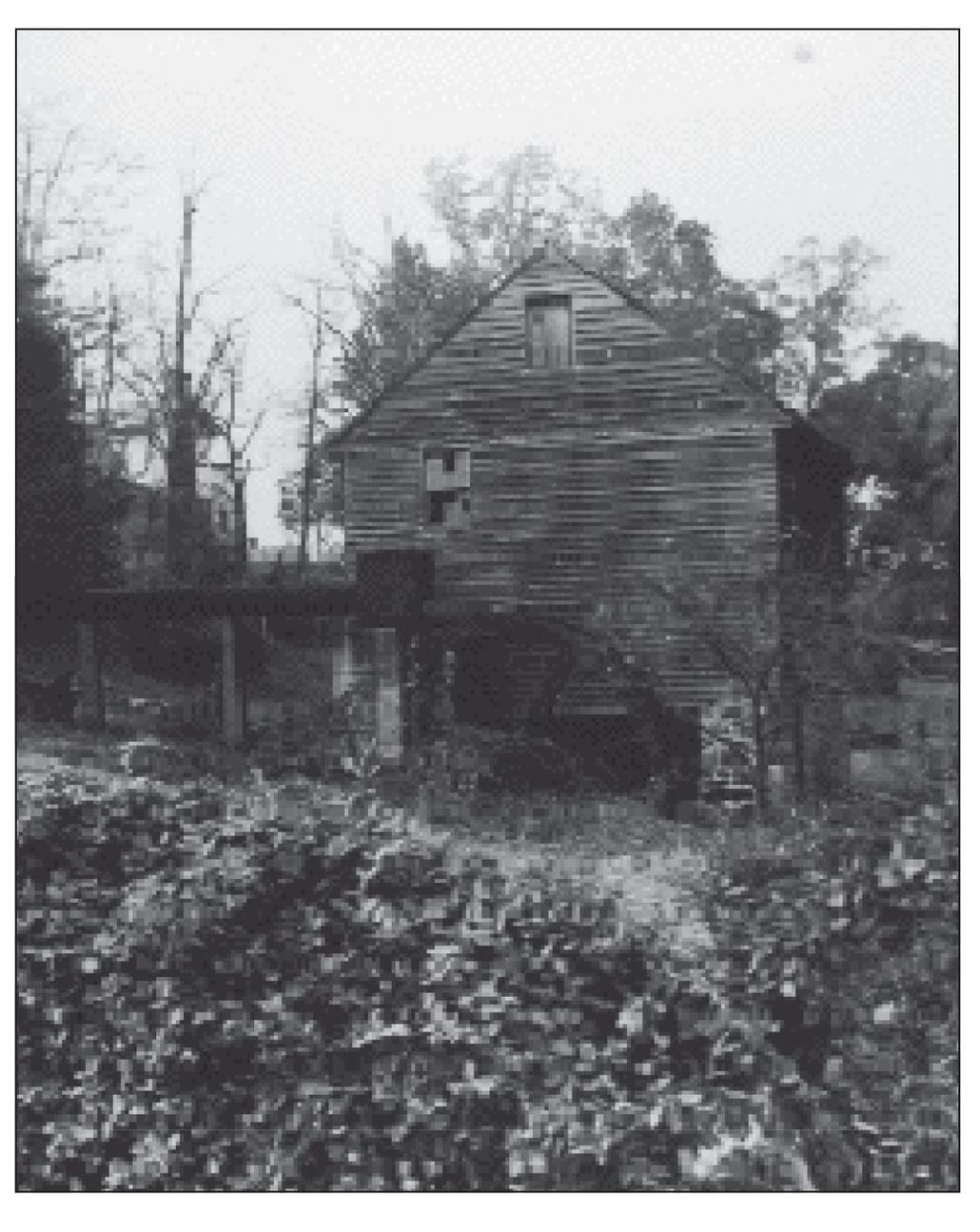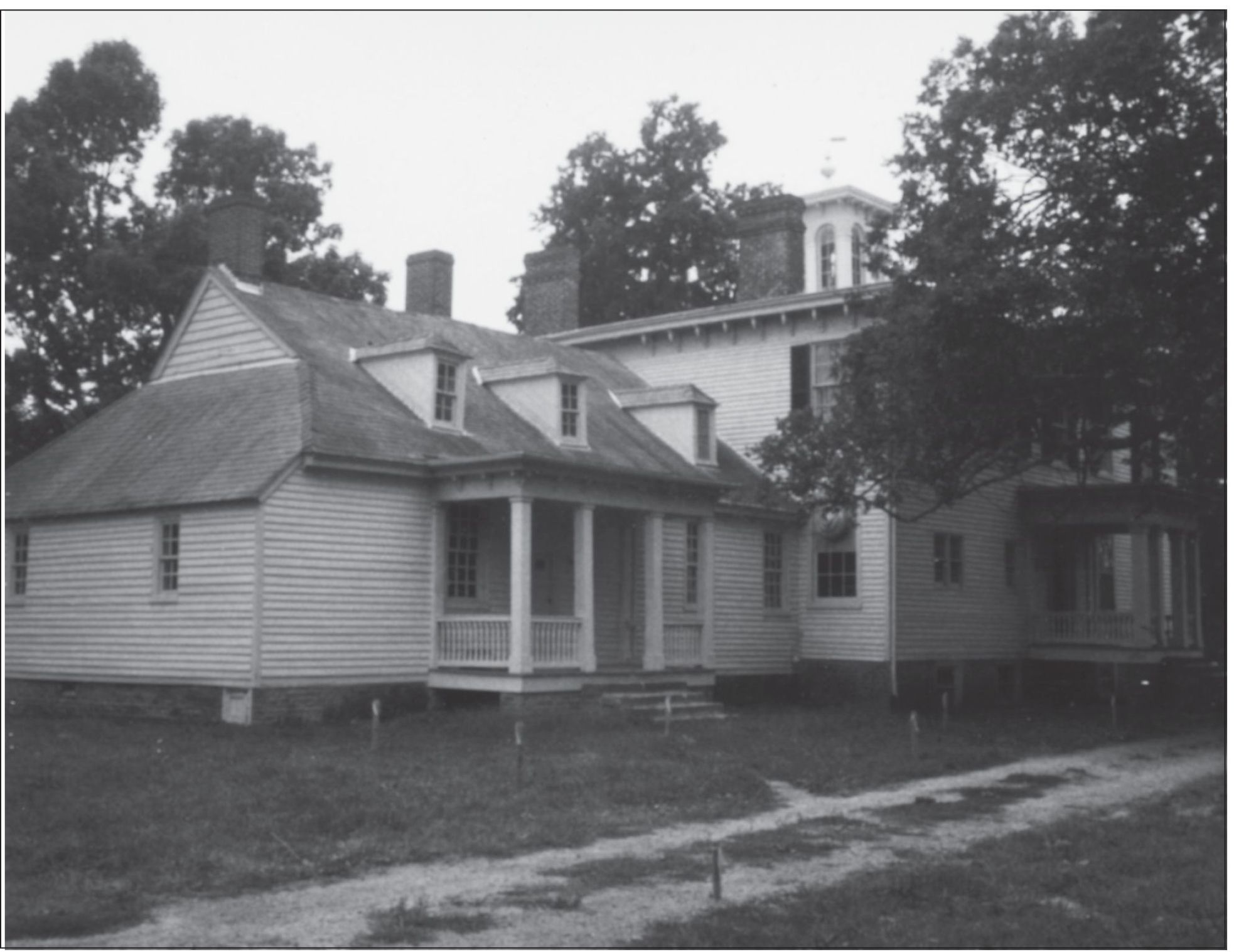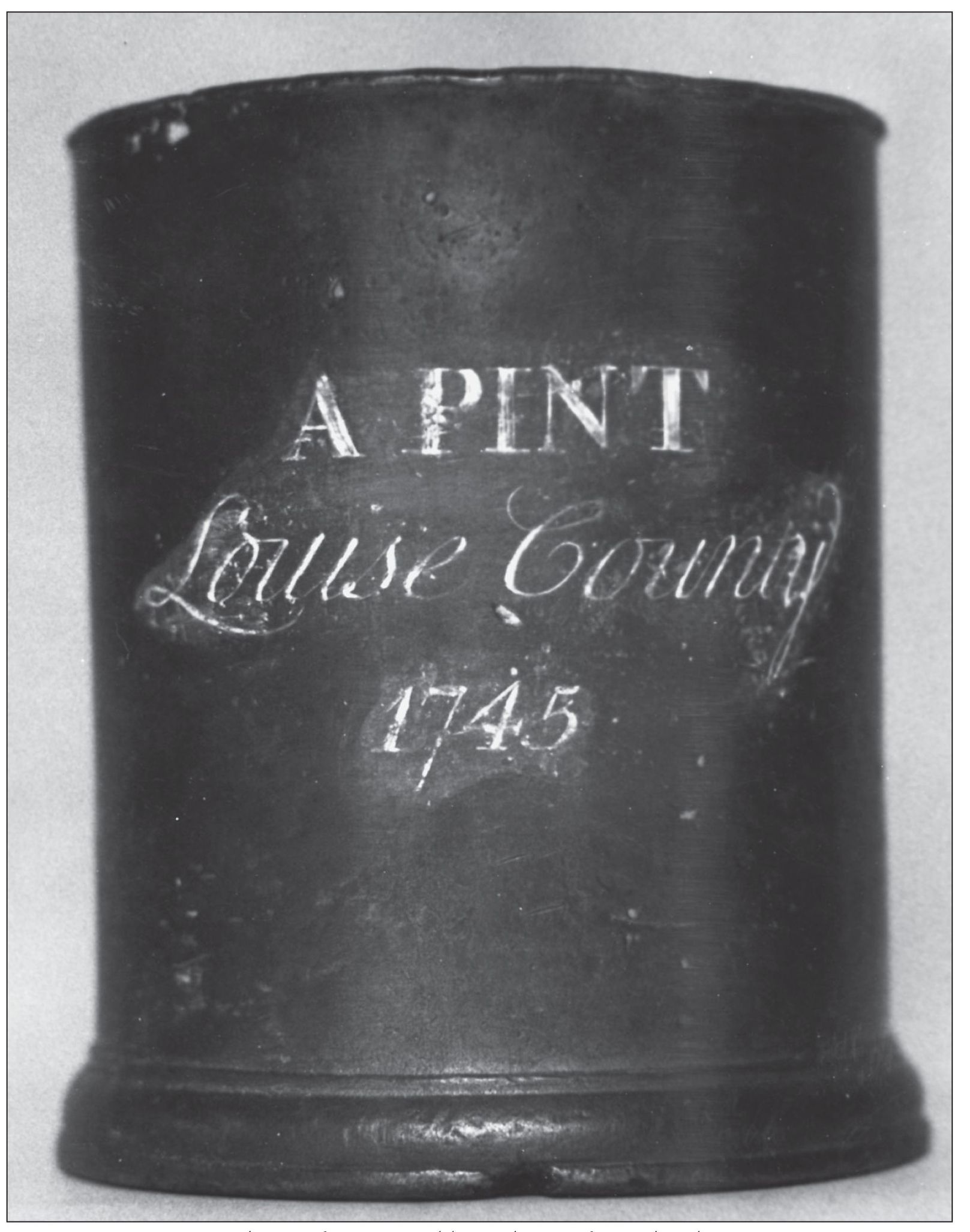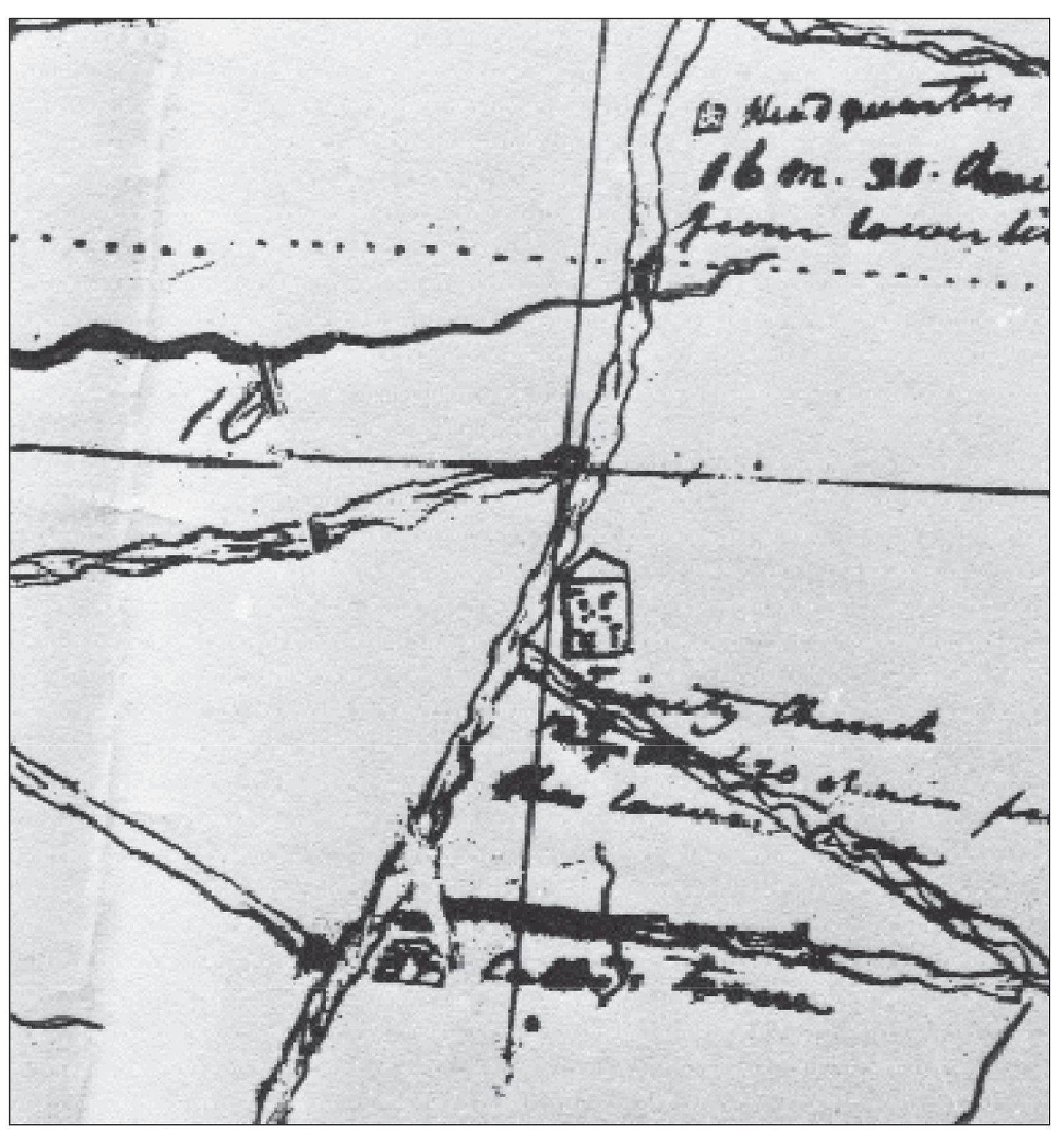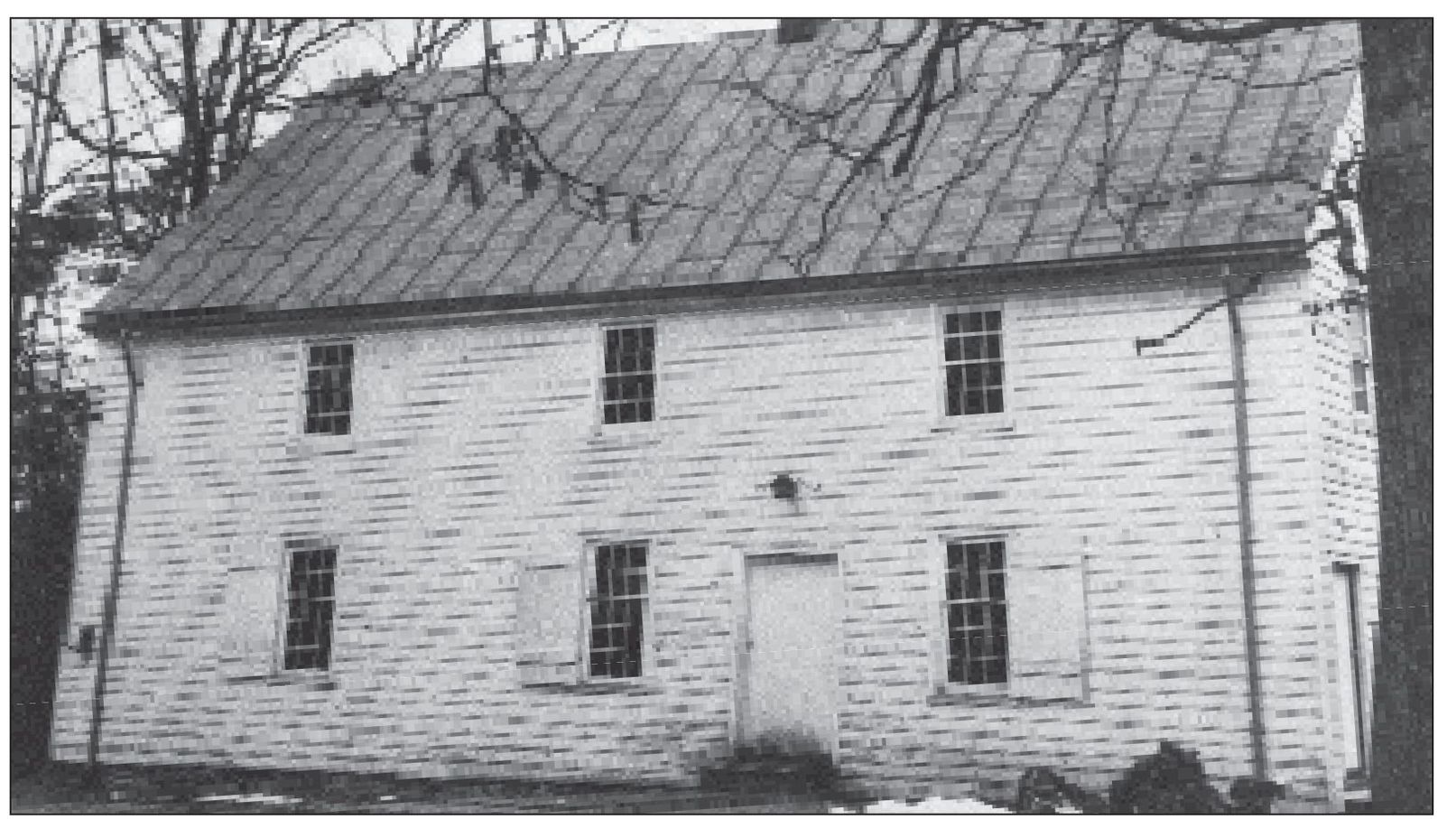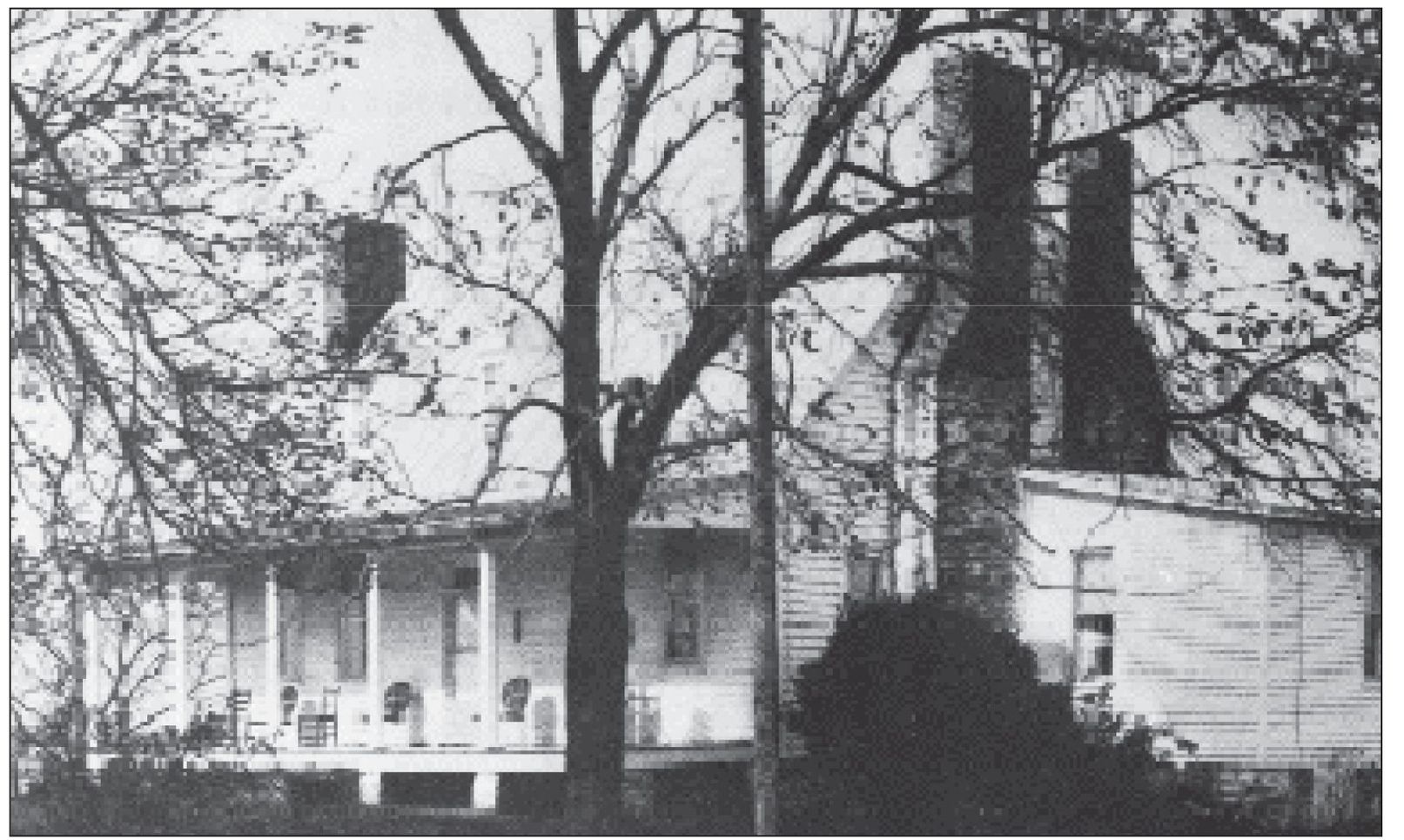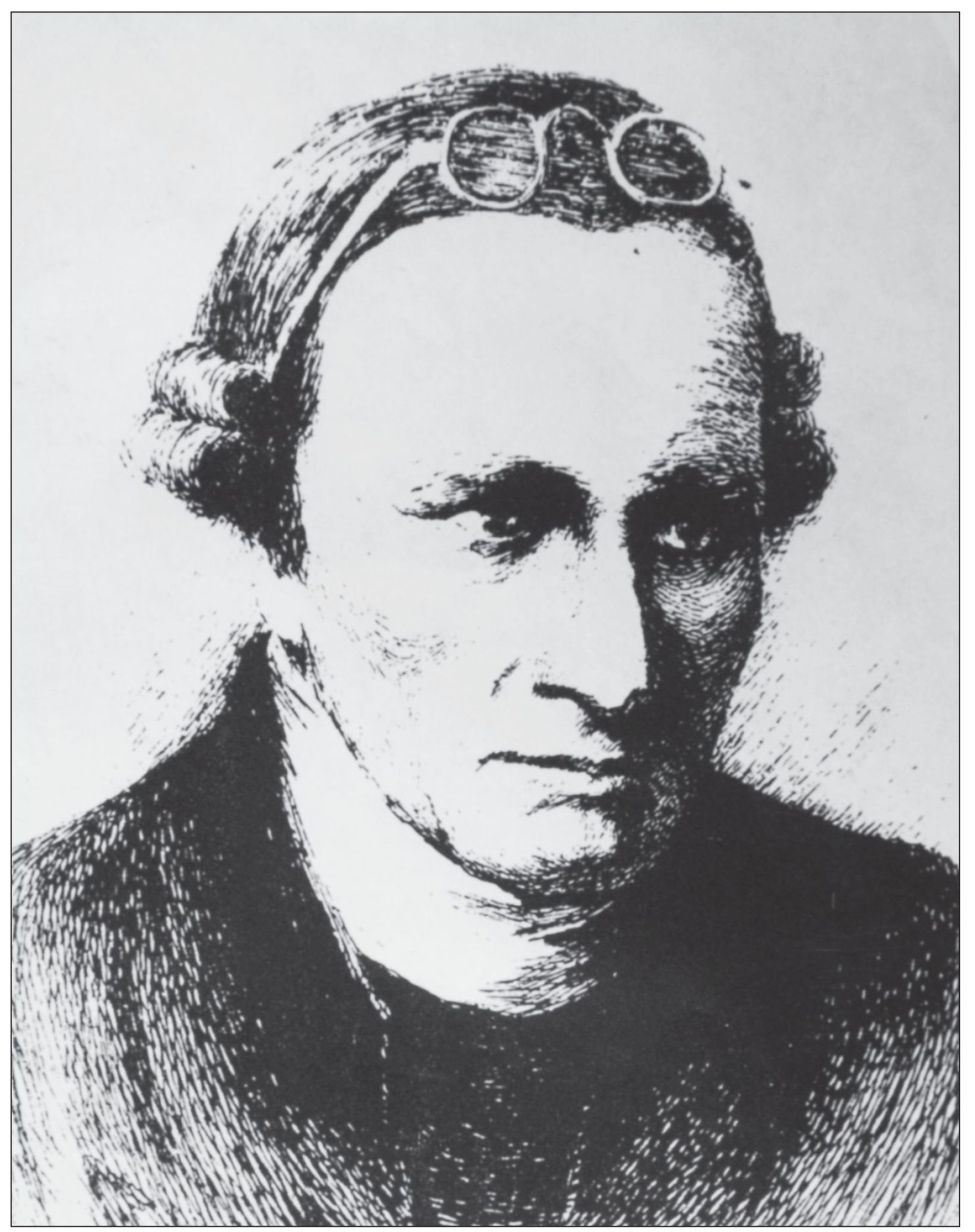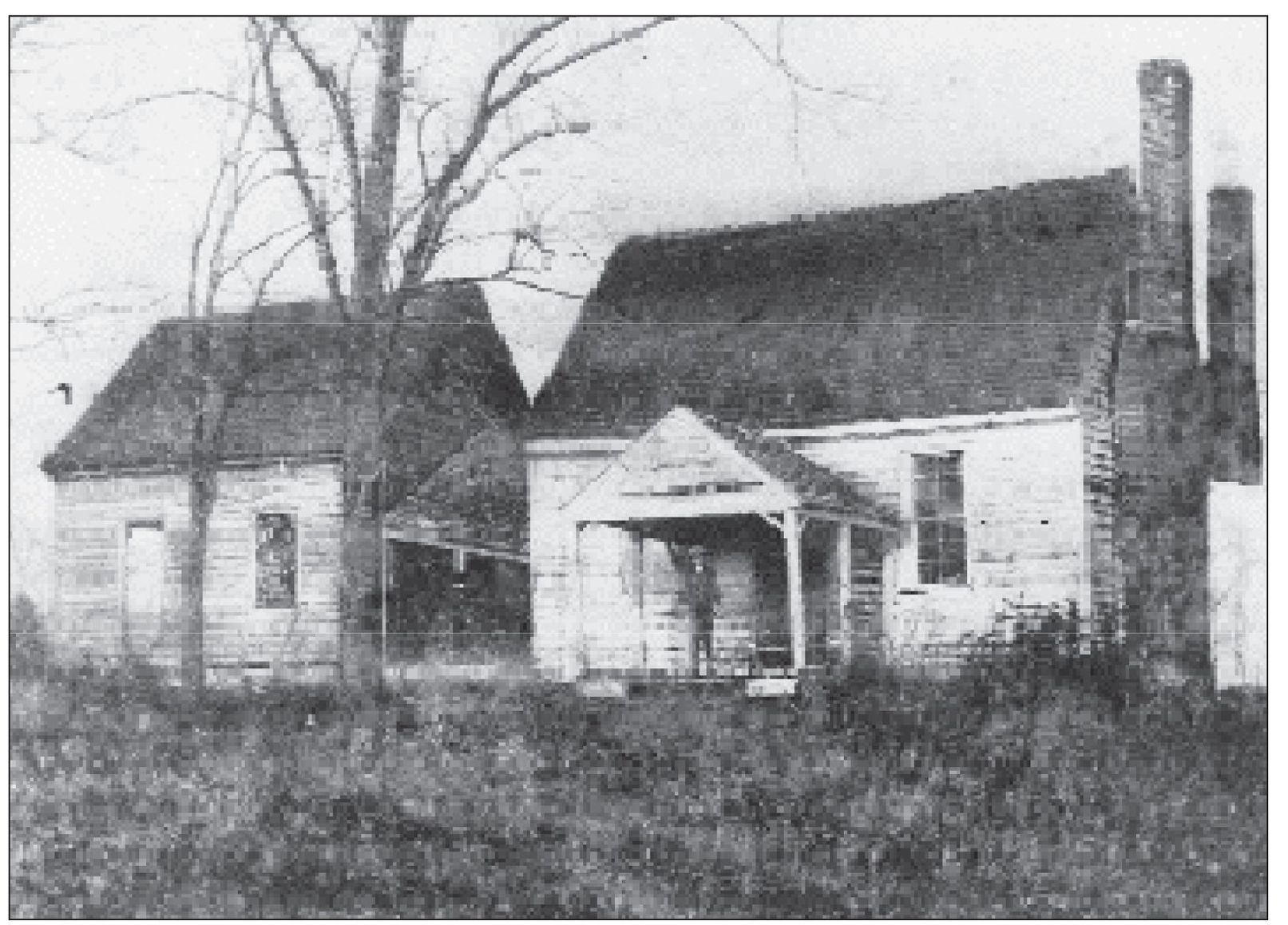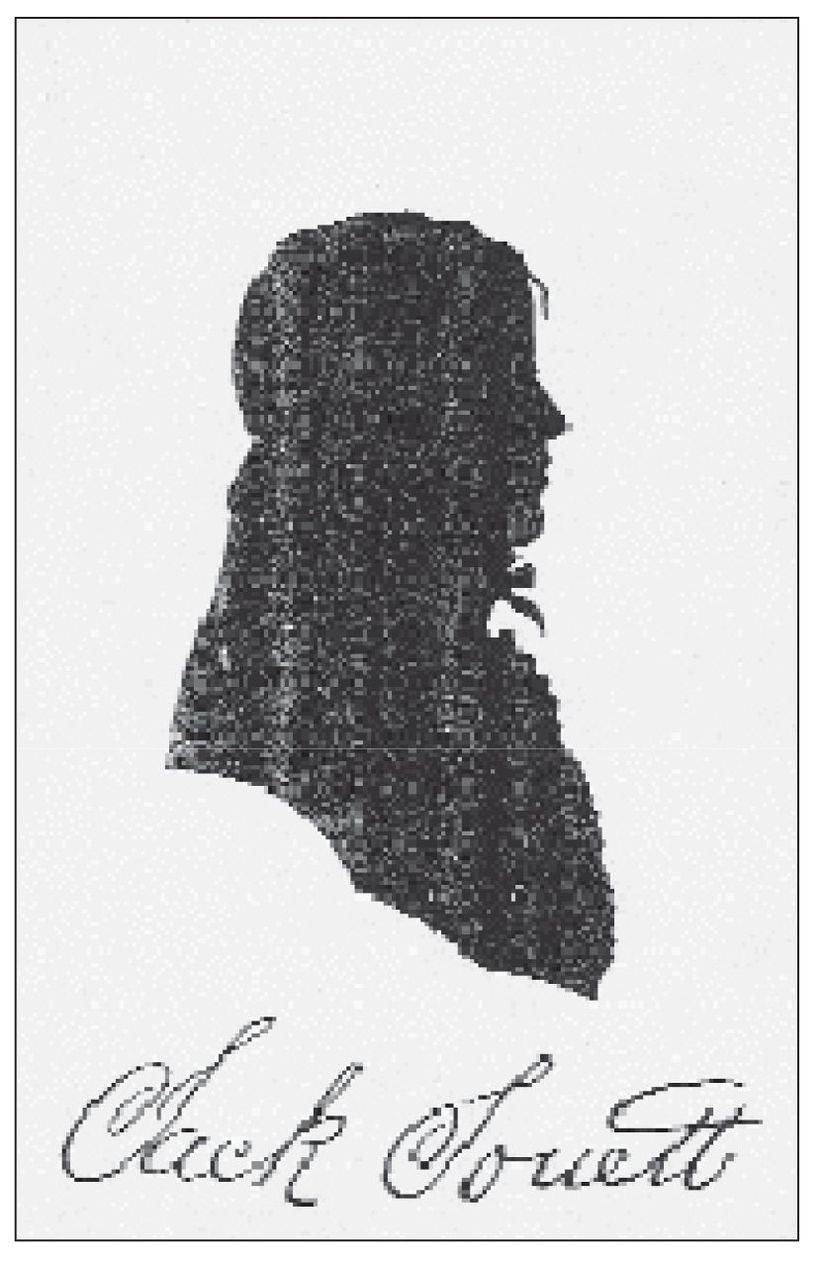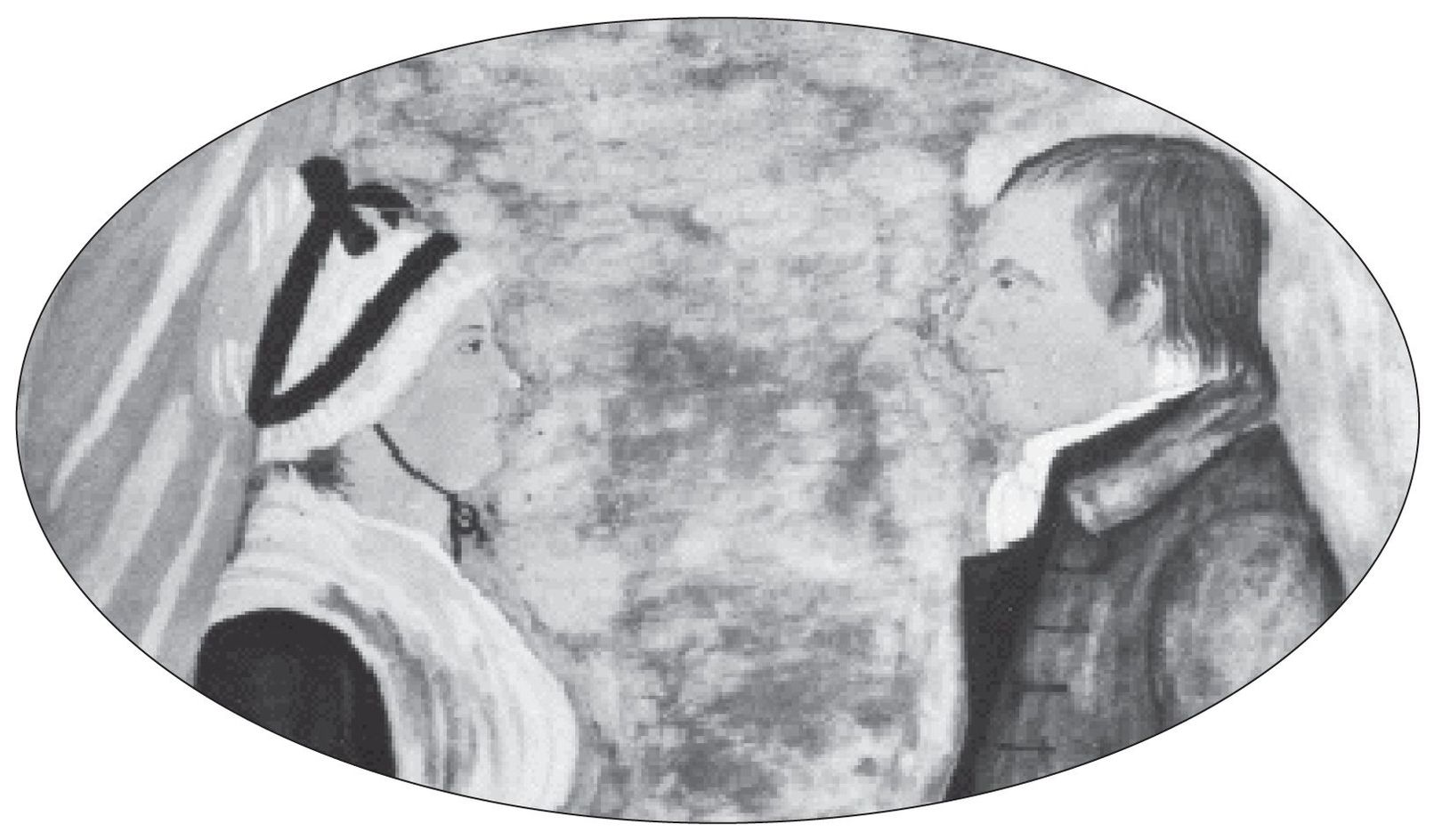One
LOUISA COUNTY
VALENTINES MILL Valentines Mill on Poor Creek is representative of the many mills which were necessary for the survival of the early settlers in Louisa County. There were numerous mills in Louisa County, including Yanceyville Mill, the only mill in Louisa County which has been in continuous operation since it was built. (LCHS)
JERDONES CASTLE The earliest part of Jerdones Castle was built in the mid-eighteenth century by Scotsman Francis Jerdone. Francis Jerdone came to Louisa in 1740 and operated several stores, mills, and a forge. He was one of several Scottish merchants who became middlemen for the early colonists. He provided goods and services as well as shipping out the colonists products for sale. His service was a vital one that was important to the growth of Louisa County. (LCHS)
THE LOUISA PINT This artifact is tangible evidence of British rule in Louisa County. Part of a set of measurements, it was used as a standard pint. If anyone doubted what a taverner served they simply brought the offending mug to the courthouse to test it against the standard. British rule affected every part of colonial life and ensured that the King got his share of profits. (LCHS)
TRINITY CHURCH Trinity Church, shown here on an 1804 map of Louisa County, was the first Anglican church in Louisa County. Parish lines for Fredericsville Parish of Louisa County were formed about the same time as county lines and covered approximately the same area. The creation of parishes around Anglican churches was yet another form of British control over the colonies at a time when religious freedom did not exist in Virginia. (LCHS)
PROVIDENCE PRESBYTERIAN CHURCH Providence Presbyterian Church near Gum Springs was begun about 1747 as a meeting house. Samuel Davies was the first preacher after the Act of Toleration. The first classical school in Louisa was taught at the church by John Todd, who also preached there from 1752 to 1793. Presidents Madison and Monroe both attended this school. The church is still in use today. (LCHS)
BEAR CASTLE Bear Castle was the birthplace and childhood home of Dabney Carr. Carr (17431773) was a young Louisa statesman responsible for the introduction of the Committees of Correspondence, which represented a step in the unification of the colonies. Carr was one of the first members of the committee. He married the sister of Thomas Jefferson in 1765. Bear Castle, overlooking the North Anna River and Elk Creek, still stands today. (LCHS)
PATRICK HENRY Patrick Henry represented Louisa County in the Virginia House of Burgesses from 1765 to 1769. Though born in Hanover County, Patrick Henry achieved prominence through his service to Louisa County. In 1763, Henry made his first inflammatory speech against the King of England. In a case fought at Hanover Courthouse, Henry argued against the Louisa minister Reverend James Maury, who sought to collect back pay from the Louisa Vestry in what became known as the Parsons Cause. In this cause, Patrick Henry stood with the Louisa County sheriff and justices of the peace against the wishes of the King of England. Henry won the case and never looked back. (LCHS)
ROUNDABOUT Roundabout was the Louisa County home of Patrick Henry. It was named after the creek which passed nearby. In 1765, while he lived at Roundabout, Patrick Henry spoke out against the Stamp Act in 1765 stating, If this be treason, make the most of it. (LCHS)
JACK JOUETT Jack Jouett was the grandson of Matthew Jouett, on whose land the first Louisa Courthouse stood. He became famous in his own right when he made his long ride from Louisa to Monticello in Charlottesville to warn Thomas Jefferson and the Virginia Legislature that the British were approaching. Cuckoo village was the site of the tavern where, on June 3, 1781, Jack Jouett overheard the British plans to capture members of the Virginia Legislature. The legislature had moved to Charlottesville after the capture of Richmond by the British. (LCHS)

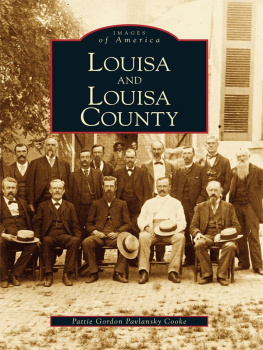




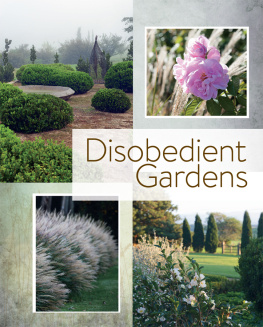
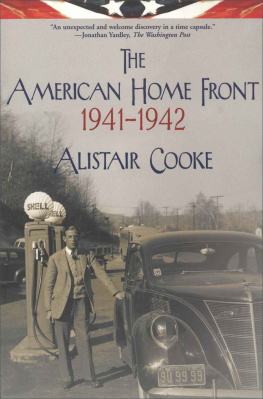
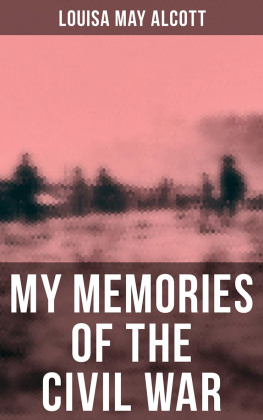



![Alcott - Louisa May Alcott: [a personal biography]](/uploads/posts/book/163779/thumbs/alcott-louisa-may-alcott-a-personal-biography.jpg)
